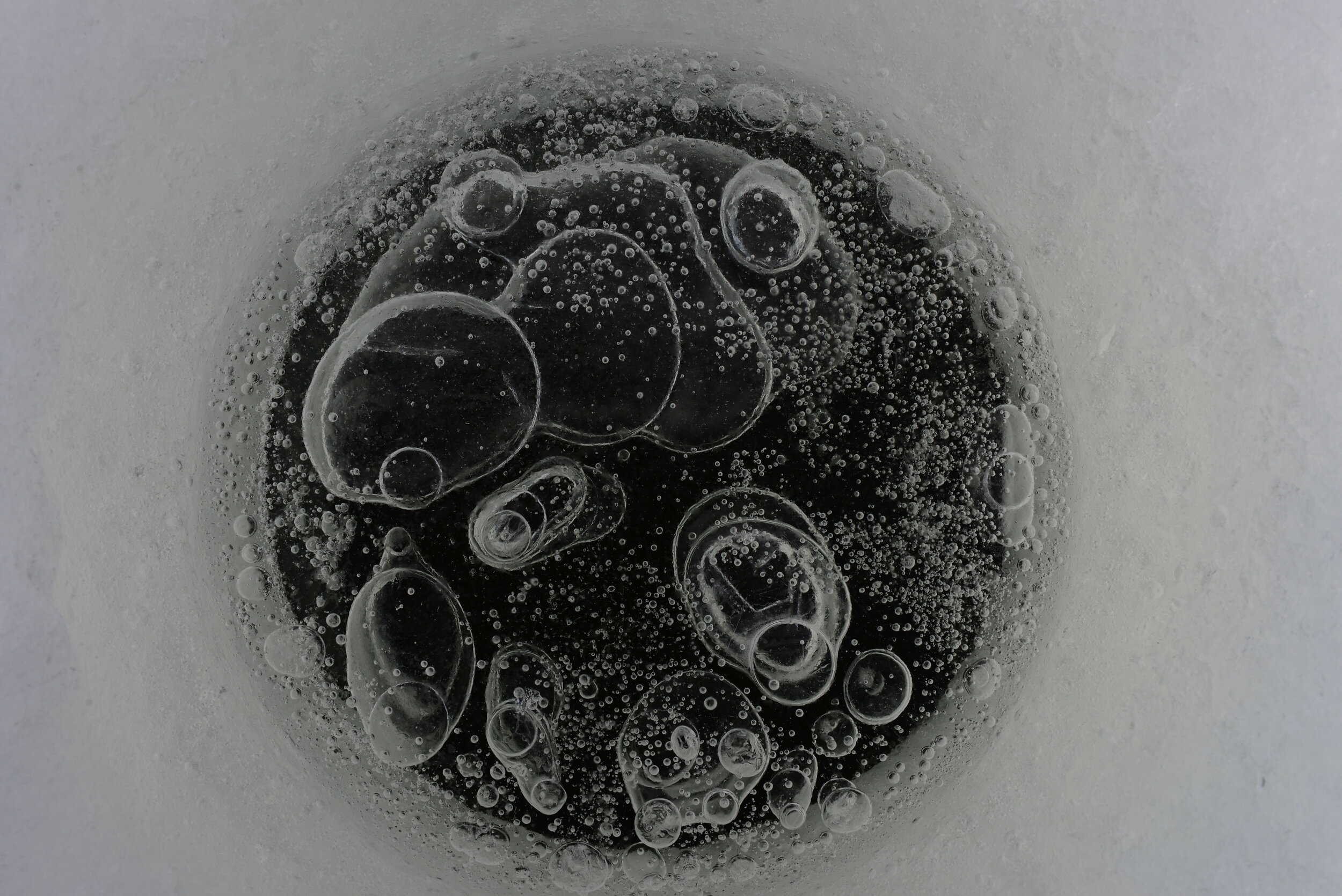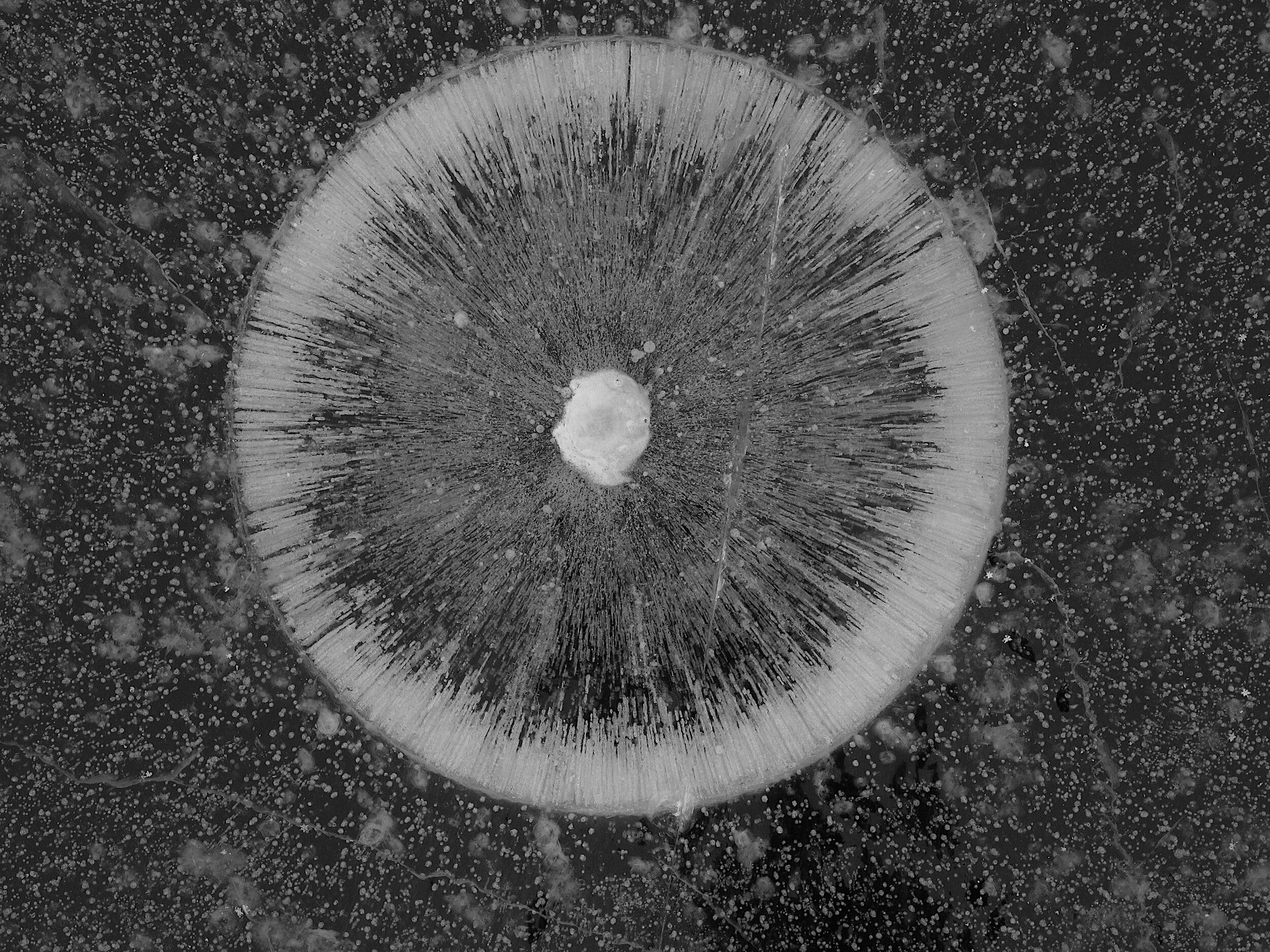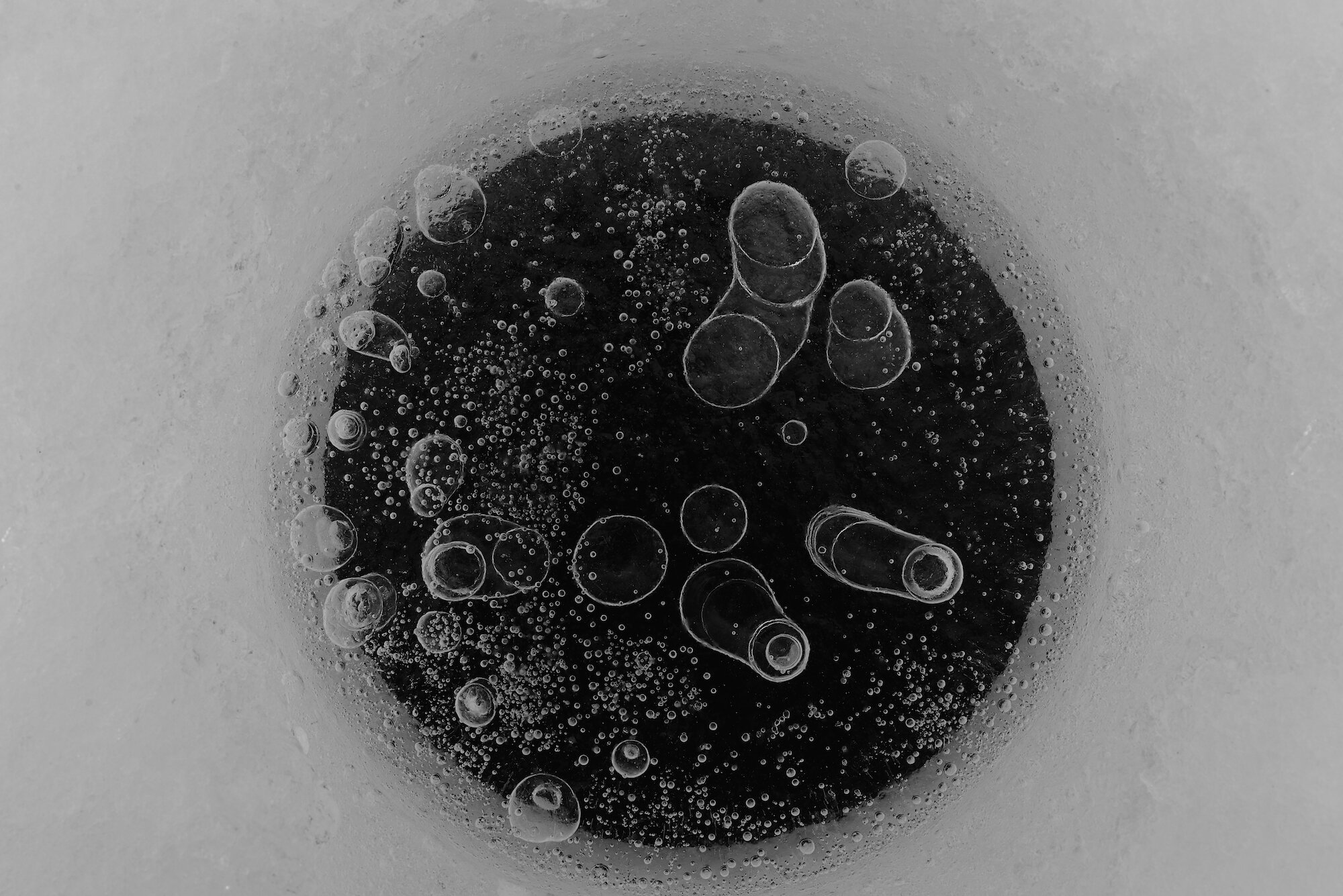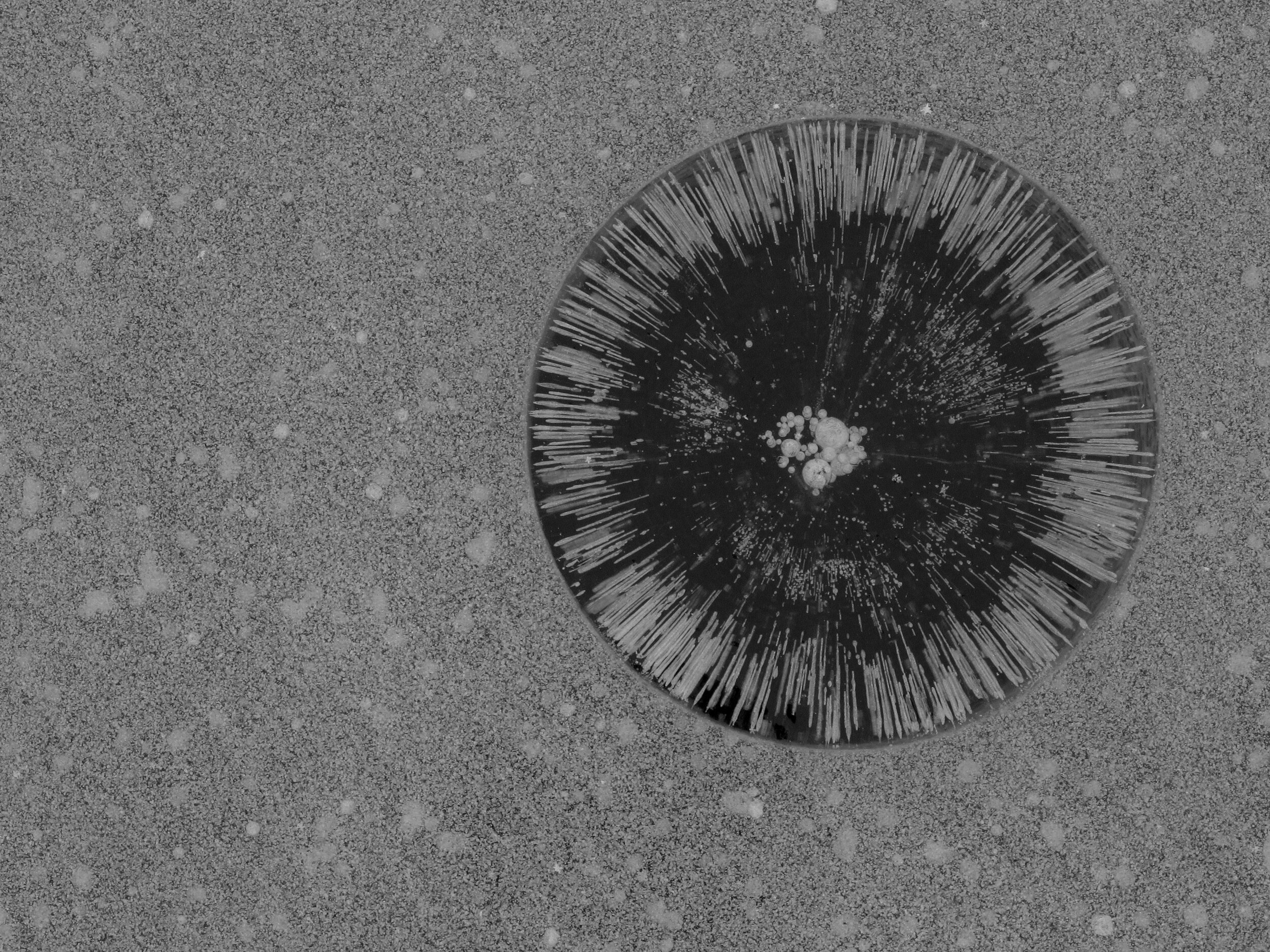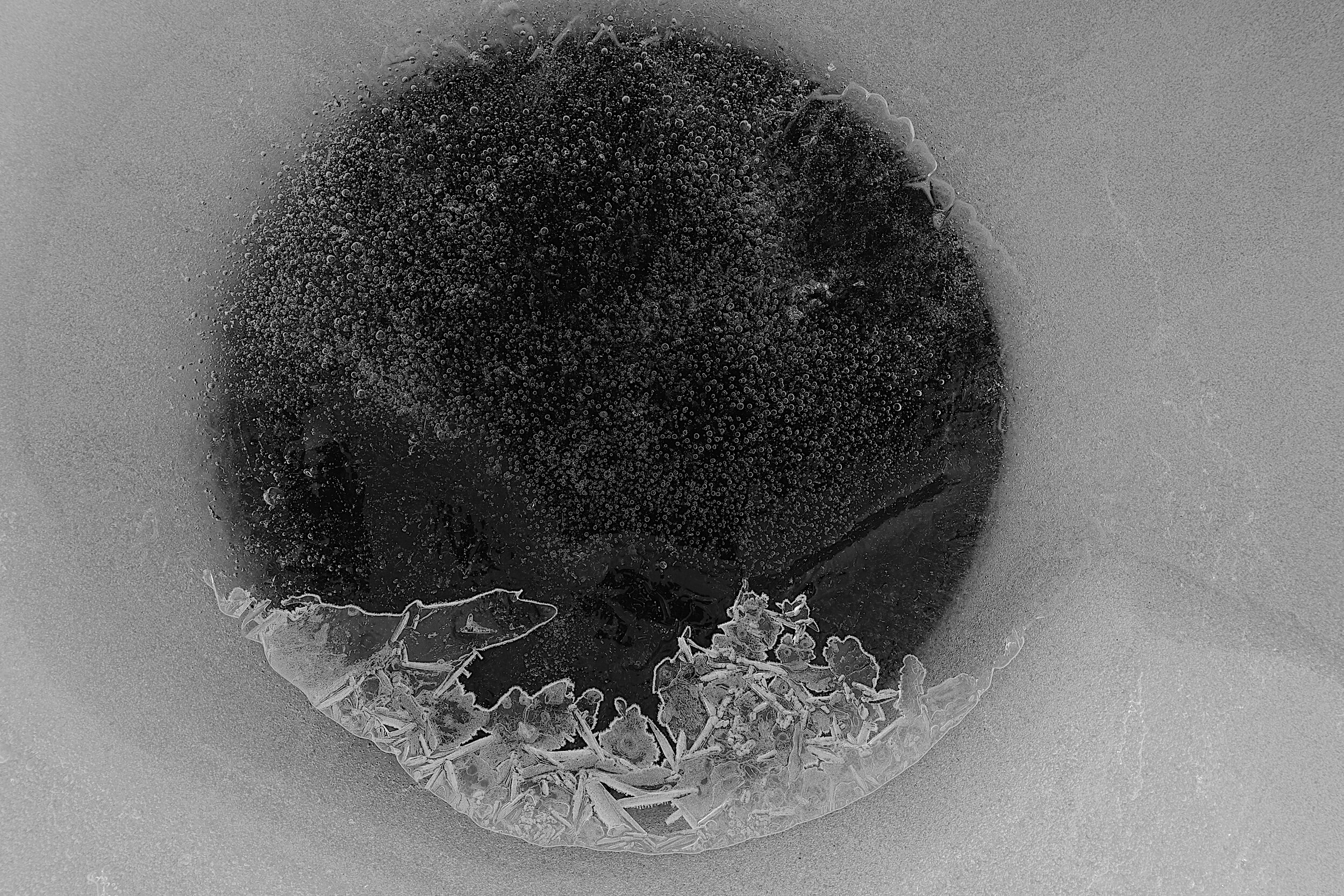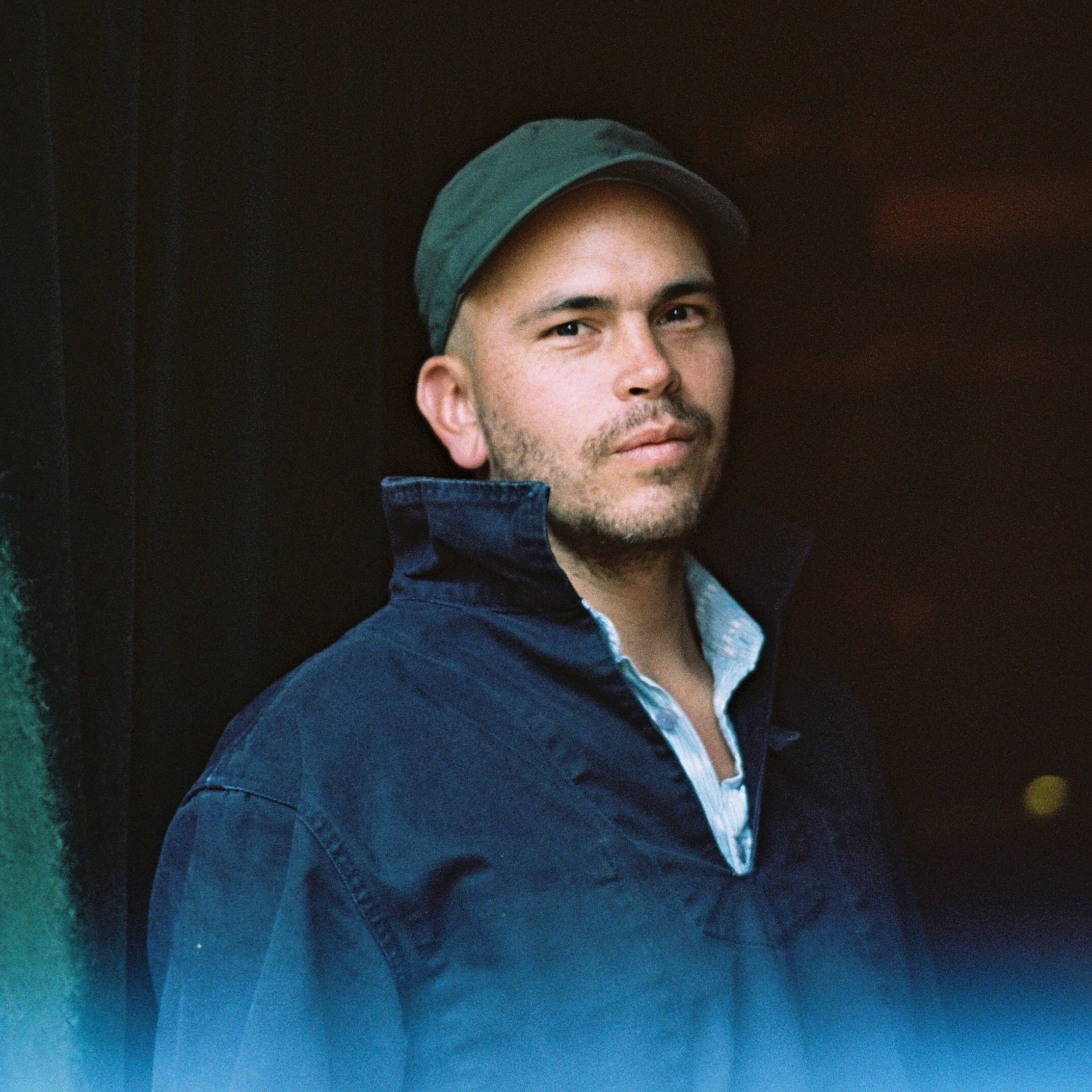“Like eyes, stars, galaxies, or cells”
Photographer Erik Hoffner has exhibited in galleries throughout the United States. In 2019, his work was the subject of a two-decade retrospective at the Linden Street Gallery in Boylston, Massachusetts. Hoffner is an editor for the global environmental media outlet Mongabay.com. His writings and photojournalism projects have appeared in The Guardian, The Washington Post, Yale Environment 360, National Geographic News Watch, Northern Woodlands, and The Sun, among others.
Erik Hoffner: Ice Visions, an exhibit of Hoffner’s photographs of the patterns that form overnight in the ice atop ice fishing holes, is on view at BMAC through March 6, 2021, and can also be seen as a virtual tour.
BMAC: In your artist statement for Ice Visions, you noted that you've been documenting these ice patterns for 20 years. What inspired you to start? What has this project meant to you over the years?
Hoffner: The first house my wife and I rented after moving to New England was on a lake. We love ice skating and were thrilled when a dry, cold December created a perfect scene outside our back door. Most mornings we'd pull on our skates, trudge out there and go until we couldn't anymore. I was fascinated to watch the ice change over the weeks before the first snow flew. It developed pressure cracks and ridges—and the ice fishing community left these beguiling, perfectly round holes that froze overnight into the most interesting, galactic designs. They seemed to become eyes gazing at, and reflecting, the night sky, like a rudimentary lens.
I was shooting mostly black and white film then and realized that these formations would look great in that format—normally even clear ice has a bluish or greenish tint to it, colors that detract from the abstract nature of the designs. That winter’s ice was so clear that we could watch fish swimming below, among aquatic plants swaying in the current. Magic.
Since then it’s become a practice to go out every early winter before the snow gets too deep and add more to my collection of images, but it’s also about having an activity that gets me pulling on my skates as often as possible. The freedom and exhilaration of flying over a frozen lake or pond is hard to beat! Some years, though, it snows early before the ice reaches a safe thickness, and the resulting images from this choppy, gray canvas are less interesting than when the fishing holes are framed by smooth, black ice.
Over the years I've been amazed at the degree to which these formations resemble each other. They're all different, like snowflakes, of course, but they generally have a consistent look—like eyes, stars, galaxies, or cells—due to tiny bubbles filtering up from below that get caught in thickening water inside the holes, causing them to stretch as they freeze, creating lines from the center that radiate outward toward the circles’ margins.
Sometimes people ask why I don't drill the holes myself and then photograph them in the morning, but I see this project as a collaboration with the ice fishing community, a documentation of how their activities create unexpected beauty and change over time.
I made a very short film of my process, and it’s playing in the BMAC gallery alongside the Ice Visions photographs:
BMAC: You mentioned in your artist statement that climate change may be playing a role in warmer winter temperatures, affecting the ice. What have you observed directly, as a photographer and an outdoorsperson, and what have you learned as an environmental journalist about how climate change may be affecting our local environment?
Hoffner: The seasons are gradually getting warmer—just ask any farmer about that. I know people out on Cape Cod, in Connecticut, and in New Jersey whose ice fishing gear has grown dusty waiting for a season with safe ice: Many times lately, their lakes barely freeze at all or stay open all winter. So it's inevitable that we'll see that here too, I'm afraid. Last December started out cold and set good, safe ice early, but then the weather warmed up for a long stretch, well into January (and the winter was generally a warm one). This variability from very cold to too warm and back again is in line with predictions for climate change. I was actually getting hot last winter while skating from hole to hole.
And what I was seeing in those holes each morning was something I hadn’t in the previous 19 winters. Instead of two or three inches of new ice building in each hole overnight, there was often just a skin of ice at the surface that I could poke my finger through. The tiny bubbles were able to travel almost all the way to the lake surface before being stopped by that thin layer of ice, where they pooled with others and created large, semi-frozen bubbles that oozed and flowed together. This created images that looked entirely different: not so much like eyes or stars but more like distorted faces, or strange animals.
It will be interesting to see what this winter brings, whether it will be too warm again, if the ice will set just right or get snowed on. Whatever the case, if the conditions are right, I'll be out with my cameras to add to the Ice Visions series and will post new images to my Instagram page. I invite folks to share their own discoveries out on the ice by posting images there, tagged with #icevisions.
BMAC: How does your work as an artist intersect with and complement your work as a journalist?
Hoffner: As a photojournalist, I'm able to marry my passion for photography and the written word, and I have found that I can say more in any article by illustrating it with images that tell even more of the story. I consider myself a photographer who also writes, and I tend to plot out my shot list and camera selection alongside—or even before—my list of interviews. For many journalists, the image-making is more of an afterthought for any assignment. The few projects I do that are primarily photo assignments are my favorites.
More broadly, I'd say that my skills at composing a photograph help me hone my writing. With a camera, I'm always trying to capture just the information I think the viewer needs, and nothing more, de-emphasizing or cropping out details that don't add to the story. Creating images on film, as I still often do, where the number of photographs you can make is limited, amplifies the emphasis on thrift and effect. When writing, I try to do the same, using only the words I think are necessary to tell a story while paying close attention to the actual details.
BMAC: In addition to Ice Visions, the Brattleboro Museum & Art Center has a second ice fishing-related exhibit currently on view, Ice Shanties: Fishing, People, and Culture, and is co-hosting the inaugural Artful Ice Shanties Design-Build Competition with Retreat Farm. Our region has a long tradition of ice fishing. What relevance do you think ice fishing has today?
Hoffner: Ice fishing is about community and camaraderie to me. Few people ice fish alone—there's just too much to do, from drilling holes to clearing them of ice constantly, watching all the tip-ups for signs of a bite, re-baiting the lines, and such. Most days, you have to stay on your toes and keep busy if you want to come home with supper. There’s this stereotype of drunk guys yelling at each other over a football game blaring on a radio, but they’re in the minority, in my experience. I encounter many families making a day of it on the ice, and groups of friends who've been fishing together for decades. My town’s rod & gun club hosts a kids’ ice fishing derby every winter, and it’s an amazing scene, attracting children of all ages and skill levels. So lots of kids are catching the ice fishing bug, and that’s good for the health of our woods and waters: Studies reveal that kids who go hunting and fishing develop a solid conservation ethic as adults, whether they still bait a hook or not.
BMAC: Instead of an artist talk about Ice Visions, you've chosen to offer a workshop (Seeing the Story, Feb. 11, 7 p.m., via Zoom) where you'll teach participants about doing their own documentary photography and visual storytelling. Who should attend this event, and what sorts of topics will you address?
Hoffner: We’ll discuss the whys and hows of visual storytelling, from composition to shot selection, and strategies for creating high-quality images. Whether you want to be a documentary photographer or improve your Instagram page, attendees will come away with some new thinking and things to try, I hope. We won’t talk much about gear or the technical details of photography and cameras—I’m not much of a “gear head” and find that keeping it simple directs more of my creative energy to the image-making.
I'll also share the work of visual storytellers who inspire me, like Ami Vitale, Edward Burtynsky (whose work my Ice Visions series was compared with, recently, in a review in Seven Days), and the classic project “Minamata” by the husband-and-wife team of Aileen and Eugene Smith. I found the Smiths’ book at the library as a kid, and it changed my thinking about the real world power of photography.
Erik Hoffner is a member of the Vermont Center for Photography and the Society of Environmental Journalists. View more images from Ice Visions and other photo and writing projects at his website, erikhoffner.com, and keep up with him on Instagram via @erikhoffner or on Twitter.

